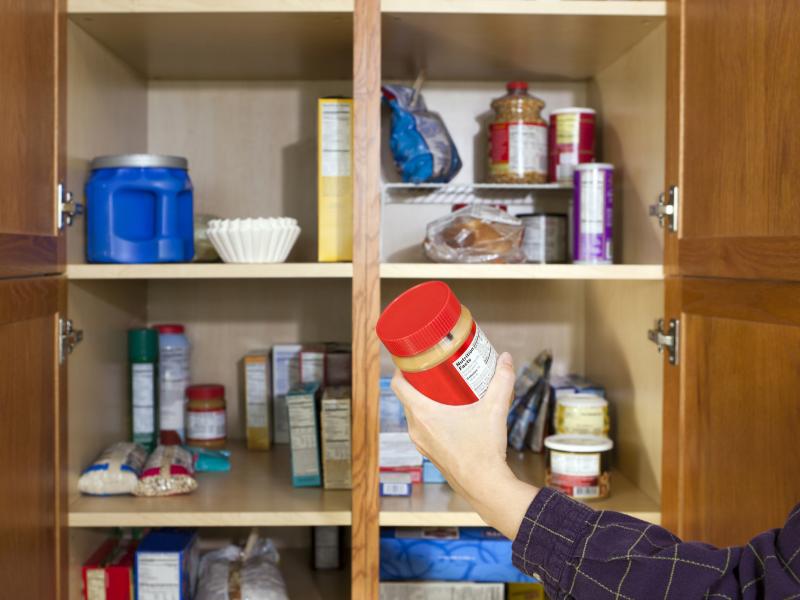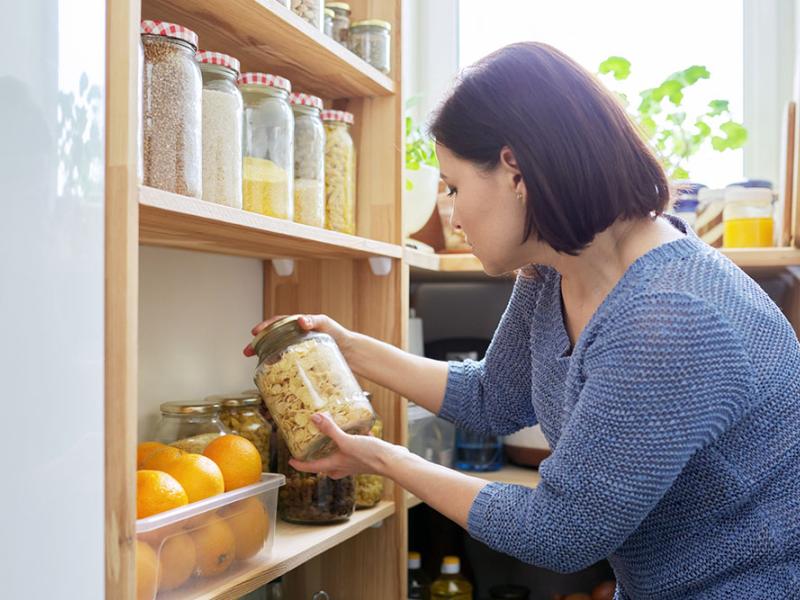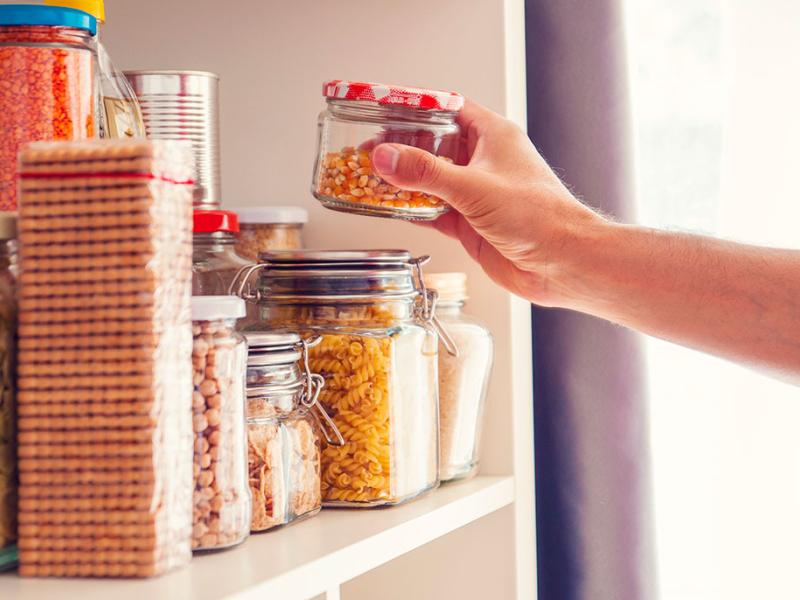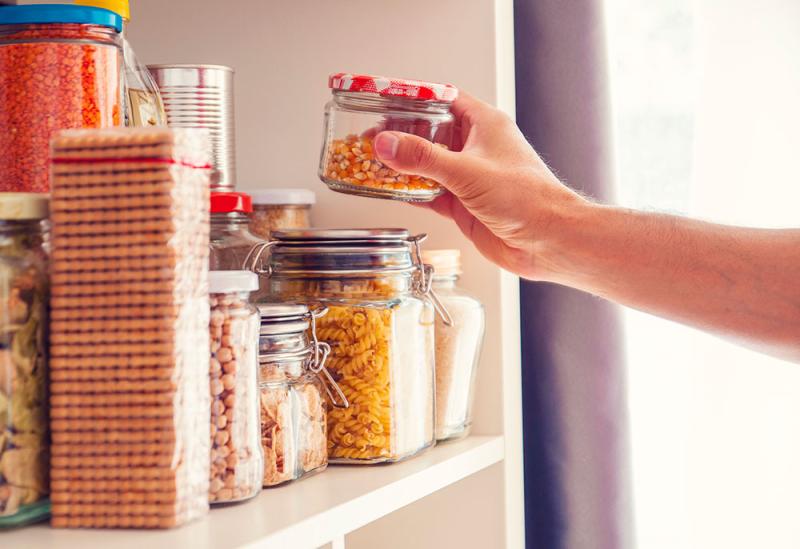
Organized food storage helps you know what you have on hand so you can make it to the grocery store quicker! Look at our tips below to learn how to organize your food storage and get ready for the store.
Pantry and Refrigerator Organization
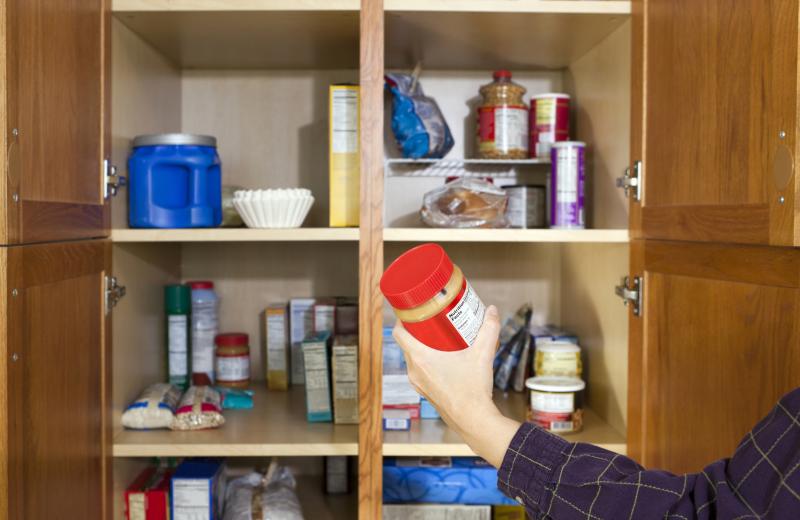
Start with your pantry
No matter what size pantry you may have, pantry organization is important so you can easily see what you have on hand. Try to organize your pantry by category. Store similar items together, such as pastas and other grains, or dried and canned beans.
Smaller items, such as canned items and spices, can be hard to organize. “Risers” can be a great way to see all of the smaller items in your cabinet without needing to move anything around. You can even make them yourself! Try placing a piece of wood or cardboard on two cans of the same size to make a makeshift shelf. Small cardboard boxes or cereal boxes would also work as a homemade riser.

Then, organize your refrigerator and freezer
Refrigerator organization is also important in order to keep your food safe and fresh. Like your pantry, try to organize your refrigerator by category. You can also use the different storage locations in your fridge to help you stay organized.
- Crisper Drawers: Most produce should be stored in the “crisper drawers”, which help extend the life of your produce.
- Refrigerator Door: This is the warmest part of the refrigerator. Store items that are least likely to spoil in this area. Condiments and most beverages are great choices for this area.
- Bottom shelf: This is the best place to store any raw meats or fish in case your package leaks.
- Working with a mini-fridge? Remember, the back of the fridge is the coldest and it gets warmer closer to the door. Avoid storing produce, like lettuce, towards the back of the fridge or it may become icy.
Do you ever buy multiple items when they are on sale? Try to follow the rule of “FIFO” or “first in, first out.” This means that the oldest item should go in front and place the newer item in the back. This helps you use up the older items before they expire. It also prevents you from having multiple open containers of the same item.
Check Your Pantry First
When meal planning, it’s important to first check to see what you already have on hand. This can prevent you from buying more than what you need. While you are searching your pantry, you can see if anything you have is expiring soon. These are the best items to use first when meal planning so that they don’t go to waste.
Pantry/Fridge Stocking Tips
Most pantry items are “shelf-stable”, meaning they last longer compared to fresh produce, dairy, eggs and meat that need to be refrigerated or frozen. These are great options to stock up on when they are on sale since they have longer shelf lives.


